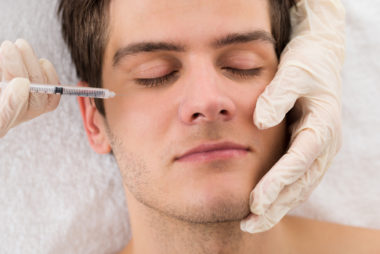 Not being able to control the bladder shouldn’t be embarrassing or depressing for your patients. It’s something that many people must deal with. Knowing all they can about incontinence, its causes and its treatments can help your patients feel empowered to deal with the stress and inconvenience of incontinence.
Not being able to control the bladder shouldn’t be embarrassing or depressing for your patients. It’s something that many people must deal with. Knowing all they can about incontinence, its causes and its treatments can help your patients feel empowered to deal with the stress and inconvenience of incontinence.
It’s a topic many patients are reluctant to talk about, but once word gets around that you can provide help, desperate patients will find you. Isn’t that a great position to be in for you and your practice?
Here’s a starter course on incontinence and its treatment – perhaps including some info you haven’t heard before:
What is urinary incontinence?
Urinary incontinence is a condition that happens when the bladder muscles that control urine flow relax involuntarily, causing leaking or urination. Statistics show that 200 million or more people around the world have this issue.
What causes incontinence?
Incontinence isn’t a disease but rather a symptom of a medical condition. It may be temporary and caused by a variety of conditions including a vaginal infection or constipation. It can also be brought on by foods that contain alcohol, caffeine, carbonation or chocolate. It may be chronic and caused by nerve damage, a weak pelvic floor or overactive muscles in the bladder. Incontinence is also associated with certain disabilities.
Can the condition be treated?
Yes, but different treatments are indicated depending on the cause and severity of the incontinence. Stress incontinence can be treated very successfully in many cases with weight loss, pelvic floor exercises, vaginal weights, electrical stimulation and other treatments. They may not provide lasting relief, however. Estrogen treatment, alpha agonists and surgery may also be required. Surgery can include suspension operations and implanting of artificial urinary sphincters.
Can Botox be used to treat urinary continence?
Yes, research has shown that small amount of Botox can help with an overactive bladder, one of the causes of incontinence. The procedure involves injecting Botox through a scope inserted in the urethra. By carefully injecting Botox directly into the bladder muscle, urinary incontinence can be reduced or eliminated. As with other therapeutic uses of Botox – like for treating clenching, migraines and excessive sweating – this treatment has shown to be safe and effective in clinical situations.
What about bladder retraining?
Bladder retraining is an effective treatment for incontinence that can be used along with Botox or on its own. This is accomplished by training the bladder to empty on a specific schedule. The patient must go to the bathroom on this schedule even if they don’t need to go for it to be effective. It also means waiting until this scheduled time even if the patient needs to go sooner. Kegel exercises and other methods are usually involved as well.
Why not just recommend adult diapers?
Many people with incontinence must wear adult diapers, which are designed for adults and have thick, strong lining. A variety of choices are available. But if something as simple as exercises, void scheduling and Botox injections can reduce or eliminate urinary incontinence, you may be able to relieve your patients from the burden of having to use diapers. Social taboos and a concern about loss of dignity are among the reasons that patients may be unwilling to use adult diapers.
Learn Botox For Cosmetic and Therapeutic Purposes
Dentox does more than offer Botox training in reducing facial lines and wrinkles. The Dentox class taught by Dr. Howard Katz includes instruction on using Botox for therapeutic purposes – including for excessive sweating, TMD, migraines and urinary continence. Get the skills you need to make a real difference in the lives of your patience when you take Botox training from Dr. Katz.
Live patient courses: https://dentox.com/live-courses/
Live/online courses: https://dentox.com/all-courses/botox-training/ & https://dentox.com/all-courses/dermal-fillers/







